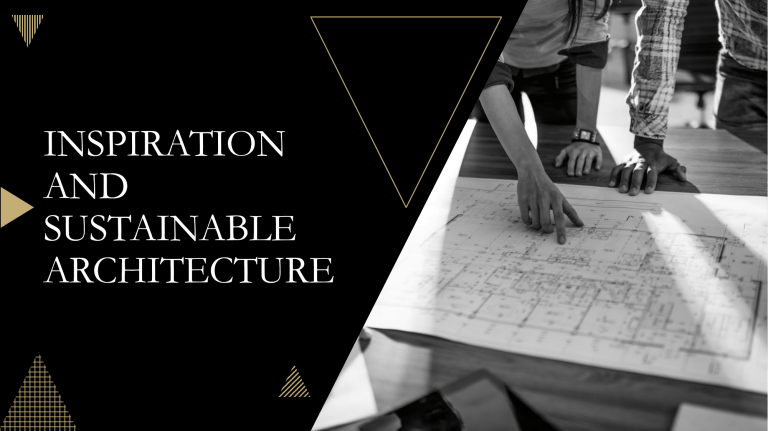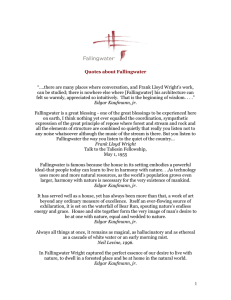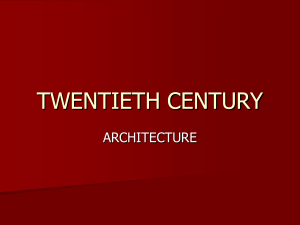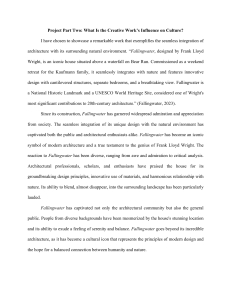
INSPIRATION AND SUSTAINABLE ARCHITECTURE WHAT IS INSPIRATION? • In order for a certain construction to be in harmony with its surroundings , The ARCHITECT should take INSPIRATION from both the URBAN and NAURAL ENVIRONMENT around the area, their form, scale, materiality and overall composition for a suitable design that fits into the place. Far from the world of digital design, architecture set many of the precedents that designers must consider when building new design. Although painting, sculpting, and other art forms are often a source of inspiration, a line must be drawn between art and design. INSPIRATION FROM NATURE Architects have long been inspired by nature. Evidence of its influence can be seen throughout the ages, from the natural symbolism of Ancient Greek and Roman architecture to the works of 20th-century visionary Frank Lloyd Wright, who designed buildings to complement the natural landscape. FALLINGWATER HOUSE IMAGINE A HOME IN HARMONY WITH NATURE • If you’ve visited Fallingwater, what are your favorite examples of the ways Wright’s design for Fallingwater is in harmony with nature? Examples include the hatch that allowed the Kaufmanns to walk from their living room into the stream, and the boulders that extend from the landscape into the house. • Hellebores are among the first plants to bloom at Fallingwater, which is located in Southwestern Pennsylvania in the northeastern United States. • In 1934 when Frank Lloyd Wright visited Bear Run, where Fallingwater would be built, he took inspiration from the beautiful Pottsville sandstone that is native to the area. The appearance (color, shape and texture) of sandstone or any rock is unique for every landscape. Organic buildings are the strength and lightness of the spiders’ spinning, buildings qualified by light, bred by native character to environment, married to the ground. ~Frank Lloyd Wright WHAT IS EFFECT OF NATURE IN ARCHITECTURE • Making nature visible within a building elevates the spirit. It serves as a visual connection between the indoor, the outdoors, and the natural environment. It can reduce stress, produce more positive emotional functioning, and actually improve our concentration. Placing glazes at strategic locations across the building can help you win some views. Installing glass with large expanses can help you get the outdoor views seamlessly flowing into the indoors. If the view from windows is scenic and natural, it makes connecting with nature more achievable. •Energy-efficient lighting fixtures and appliances •Efficient heating, cooling and ventilation systems Elements of Sustainable Architecture •Water-saving plumbing fixtures •Windows placed strategically to maximize natural light •Rainwater harvesting •Greywater reuse •Landscaping with native vegetation •Incorporation of renewable energy sources, such as solar and wind power Famous Green Buildings 2006 2004 1995 Council House 2, Melbourne Sohrabji Godrej Green business centre, Hyderabad ACROS Fukuoka Foundation, Japan Architecture Firm WOHA, Singapore Toronto Tree Tower, Canada 1994 2013 Yin & Yang House, Germany 2017 THANK YOU!! ~VASUDHA SINHAL ~RONIT JOSEPH BUKSH ~JATIN ARAS ~ANSHUL DONGRE ~CHIRAG DESAI ~JATIN NIKHADE


